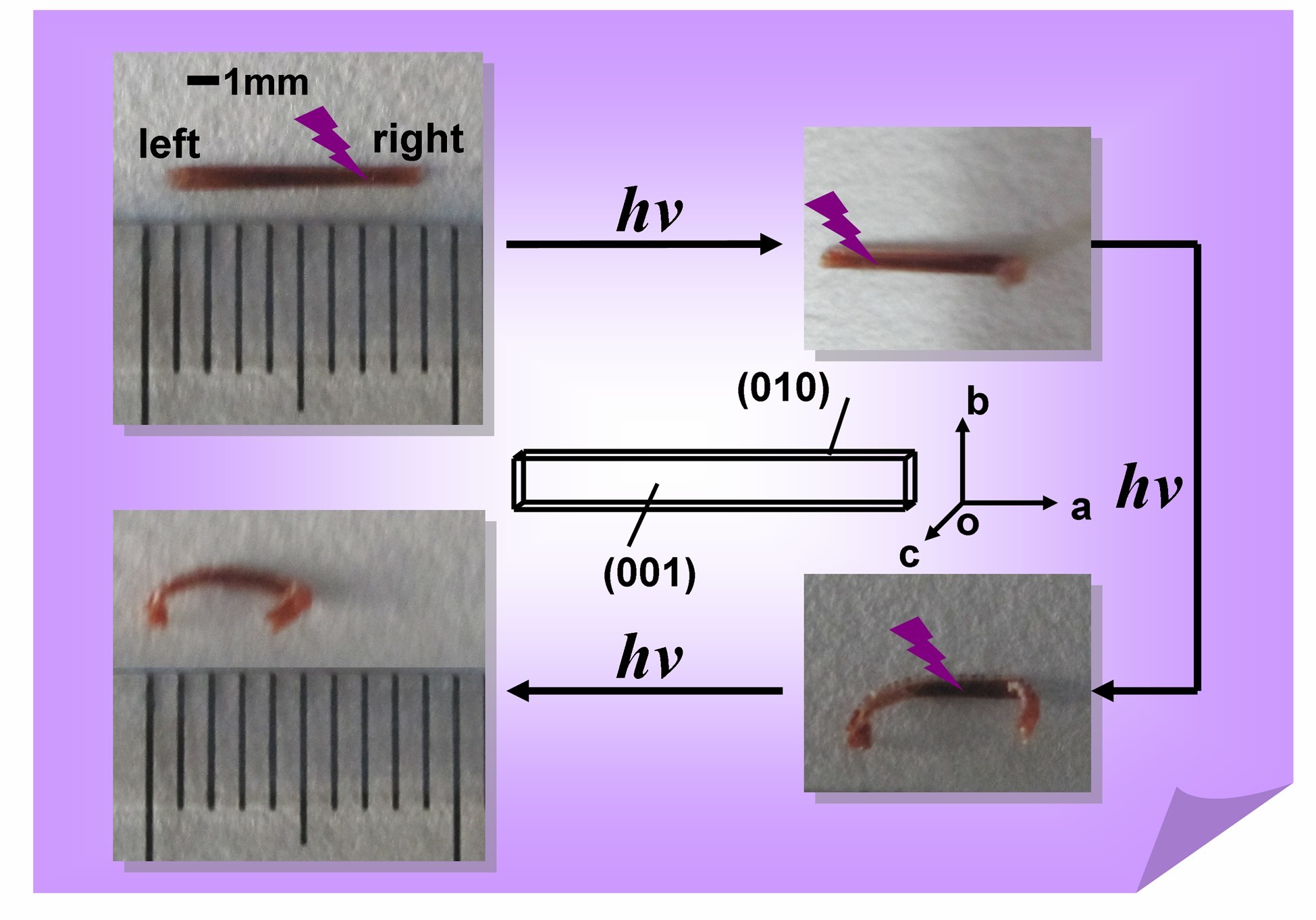Transducing an input energy stimulus into output energy that can power or accomplish mechanical work is a pervasive topic of many scientific disciplines. One of the current issues is to harness the natural and renewable energy sources which have spawned an ever-burgeoning pursuit of novel materials.
Owing to the advantages in remote, temporal and spatial detection, light-induced deformable materials have emerged as excellent candidates for photomechanical applications. Despite the fact that some highly ordered molecular crystals with photomechanical motions have been reported, the scale of these single crystal materials are quite small (in nm or μm scale), which may limit their practical applications in real world.
A research group led by Prof. ZHANG Jie at Fujian Institute of Research on the Structure of Matter, Chinese Academy of Sciences (FJIRSM), has developed a strategy to facilitate the molecular deformation and motion amplification by engineering photoactive olefin derivative to increase molecular flexibility and controlling crystal packing through the cation-π interactions.
The photoinduced [2+2] cycloaddition of adjacent olefin units in the crystal leads to the controllable deformation of macroscopic single crystal on the centimeter-scale, which is by far the largest among the reported photomechanical crystalline materials.
More attractively, such process is accompanied with high fluorescence visual contrast essential for remote detection in the photomechanical work. It is believed that the present work will enlighten a new avenue of developing macroscopically photomechanical crystalline materials based on small organic molecules (Angew. Chem. Int. Ed., 2013, 52, 6653–6657).
Prior to this work, Prof. ZHANG’s group has made continuous exploration and obtained a series of results in molecular self-assembly of photoactive pyridinium derivatives and fine-tuning of their molecular structures and properties.

The roll up of a single crystal with controlled irradiation (Image by Prof. ZHANG’s group)
CONTACT:
Prof. ZHANG Jie
Fujian Institute of Research on the Structure of Matter
Chinese Academy of Sciences
Email: zhangjie@fjirsm.ac.cn

